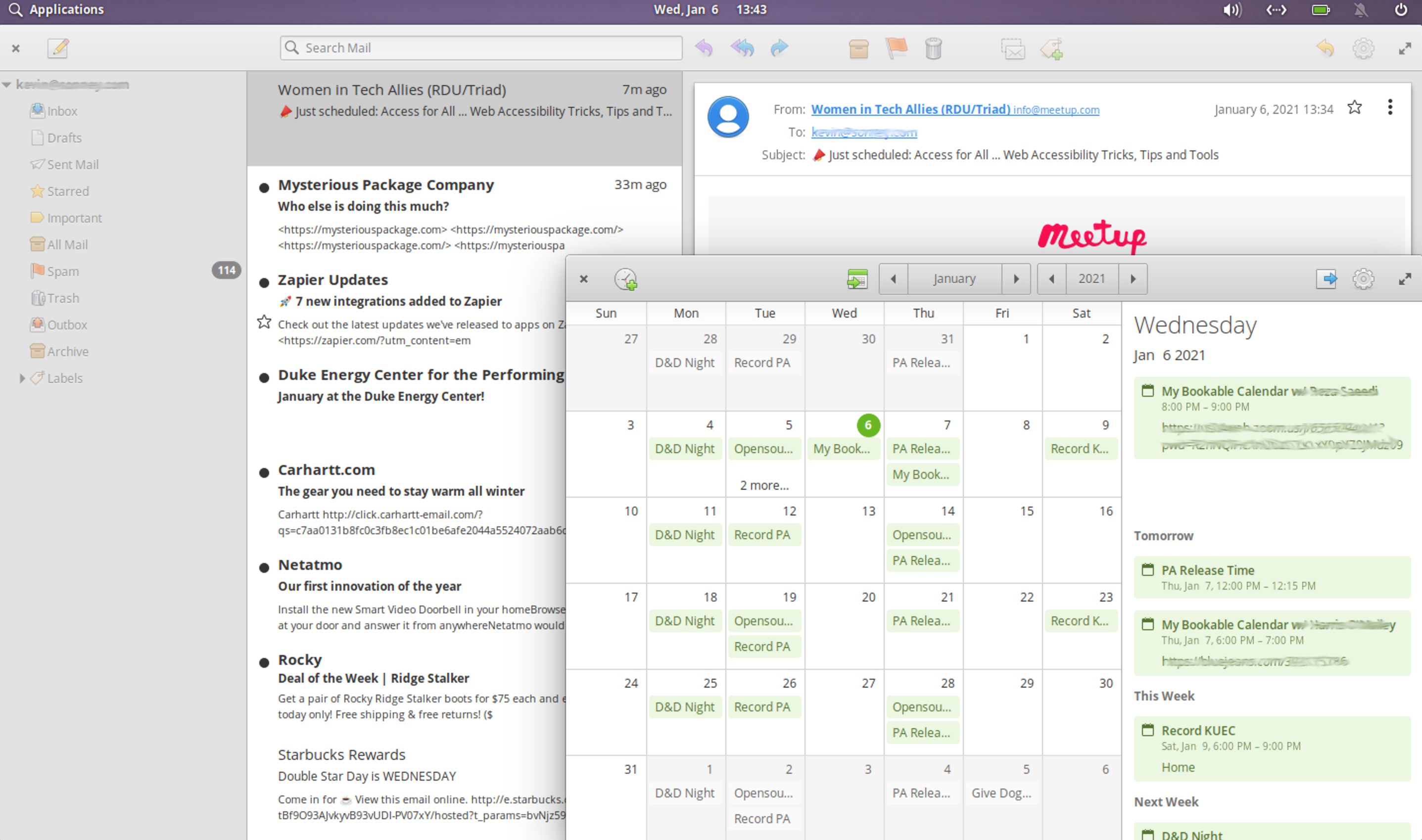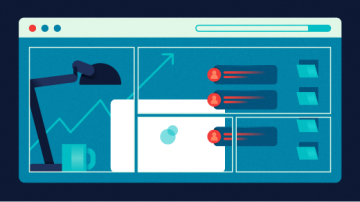In prior years, this annual series covered individual apps. This year, we are looking at all-in-one solutions in addition to strategies to help in 2021. Welcome to day 1 of 21 Days of Productivity in 2021.
When looking for tools to be more productive, it is easy to cobble together a working collection of applications that almost, but just don't quite, play nice together. In prior years, we have talked about individual email applications, calendaring applications, note-taking applications, and so on. There are always bumps, though—places where it either takes custom scripts or complicated export/import steps to make a tool work.
ElementaryOS is a complete desktop with a beautiful, functional, and productive environment.

ElementaryOS Desktop, CC-By-NA by Kevin Sonney
ElementaryOS is a pay-what-you-want open source project based on the popular Ubuntu Linux distribution. The initial setup and installation will be very familiar to anyone who has installed Ubuntu in the past. However, once logged in, the experience can be very different.
ElementaryOS uses the Gala window manager and the Pantheon shell. Both were developed specifically for Elementary. Once installed, the desktop is very minimal, and it only provides a small number of lightweight apps. These apps include a web browser, terminal, mail client, and calendaring client. It also has an App Center that allows you to install both free and commercial applications curated by the Elementary team.

ElementaryOS mail and calendar, CC-By-NA by Kevin Sonney
The mail and calendar apps will look very familiar since both have been used by other distributions for a while now. Mail started as a fork of Geary, and the calendar is known as Maya other places. Setup is very easy for both. The two apps only authenticate with a username/password by default, so users who require two-factor authentication will need to go through some extra steps. The interface is exceptionally lightweight and fast for both.

The App Center, CC BY-SA 4.0 by Kevin Sonney
By default, ElementaryOS does not include a to-do list or note-taking application. This situation is where the App Center comes into play. In the App Center, there is a large selection of applications to fill the gaps. Two of the apps really stand out. The first is Planner, a clean, lightweight to-do list manager. It supports multiple lists, scheduled and recurring tasks, projects, and sub-projects. It can also sync with the popular Todoist online application, but that isn't required.
The second app from the App Center is Notes-Up, a note-taking app that uses Markdown for rich text. It allows a user to create multiple notes in multiple notebooks and has both a "View" and "Edit" option so that you can preview how the final document will look. Again, the app is fast, lightweight, and very minimalistic, keeping with the overall ElementaryOS look and feel.

Planner and Notes-up, CC BY-SA 4.0 by Kevin Sonney
If you don't like the default apps, Elementary is based on Ubuntu LTS, so the entire Ubuntu app ecosystem is available if you need to use other applications. Overall, though, the ElementaryOS default provides a fast, lightweight, and efficient desktop to keep you productive in the new year.










Comments are closed.